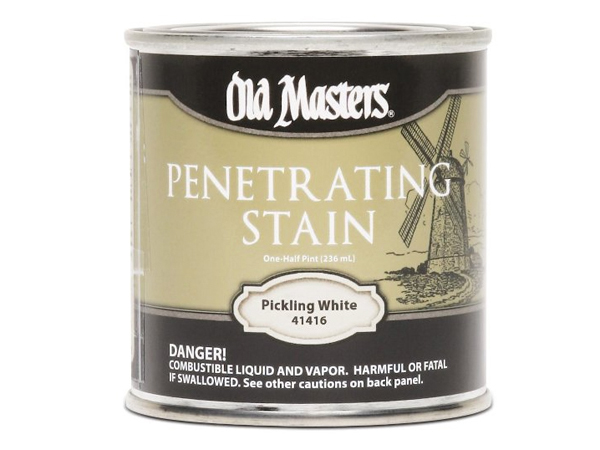
We’d like to put a whitewash pickling stain on cherry. We still want the grain of the wood to show. I have been doing woodworking for over 40 years but have never used this kind of stain before. I wondered if you could suggest how I should do it. – Kenneth Benien
Chris Marshall: If your goal is to turn the cherry a very light uniform color overall, apply it just as you would any other darker wood stain. Flood the pickling stain onto the bare wood, then wipe off as much of the color as you want so the wood grain underneath shows through. It will be more pickled in the softer, earlywood areas, and less pickled in the harder latewood areas. If you’re concerned about blotching — an issue with any pigment stain on cherry — use a stain controller before applying the pickling stain.
On open-grained woods like oak or ash, another technique is to seal the wood first with thinned topcoat or shellac, then use the pickling stain to force the white pigment into just the open-grain areas. In effect, this pretreating will cause the stain to act more like a glaze. The trapped pigments will turn the open pores the stain color but leave the rest of the wood basically its original color. This won’t have this same effect on cherry. Cherry varies in density, which will soak up pigment to give you color contrast, but it’s not an “open” pored wood.
You might not know this, but you can mimic a pickling stain with ordinary oil- or water-based paint, too. Just thin the paint by about 25 percent with mineral spirits (for oil-based paint) or water (for water-based paint). Then, apply the paint and wipe off the excess, just like pickling stain. Any color of paint will work for this application, so you aren’t limited to only white.
So, long story short, stain away just as though your stain color were dark instead of light. Of course, try the pickling stain on a sample piece of cherry to experiment with it first. After 40 years of woodworking, you know that’s always a good idea.





